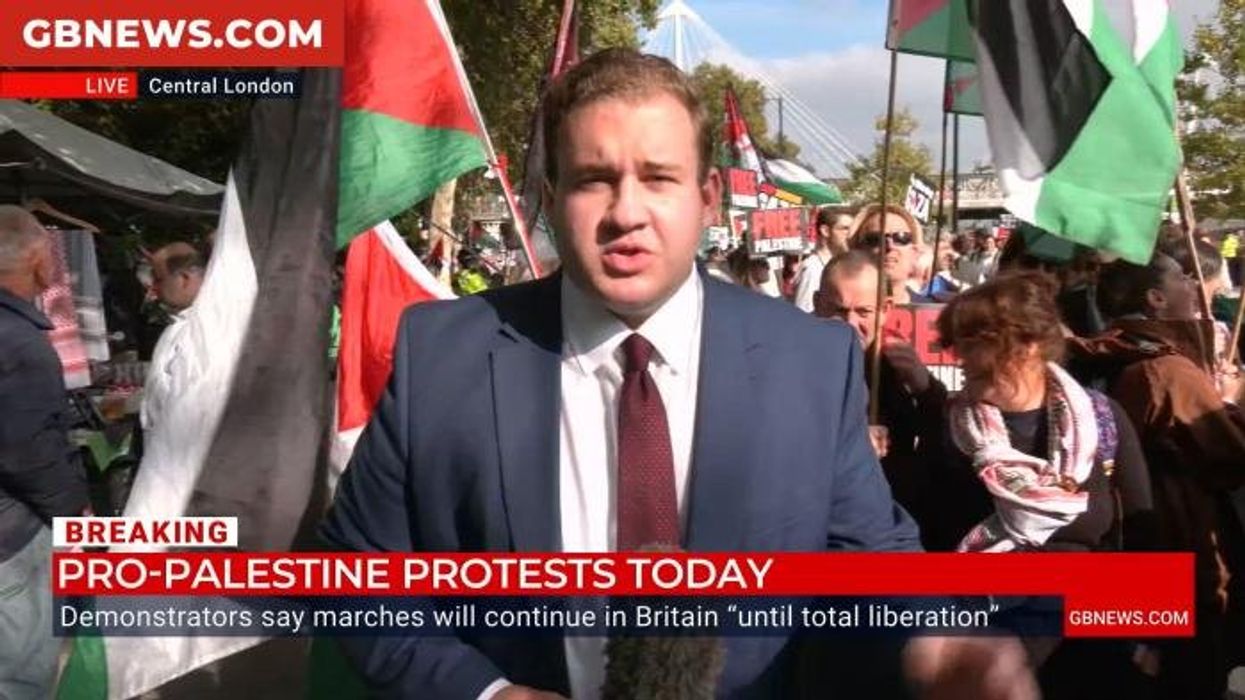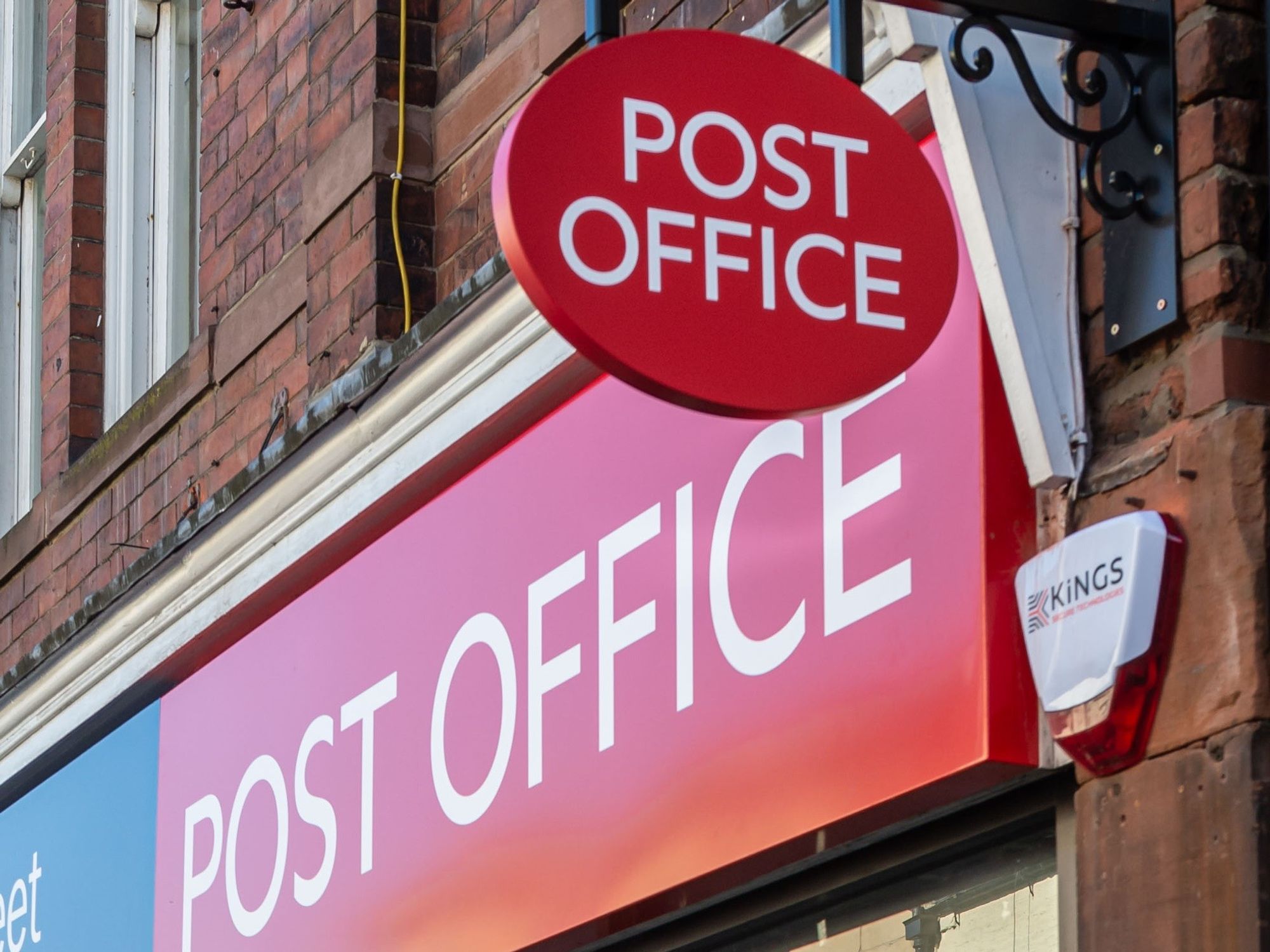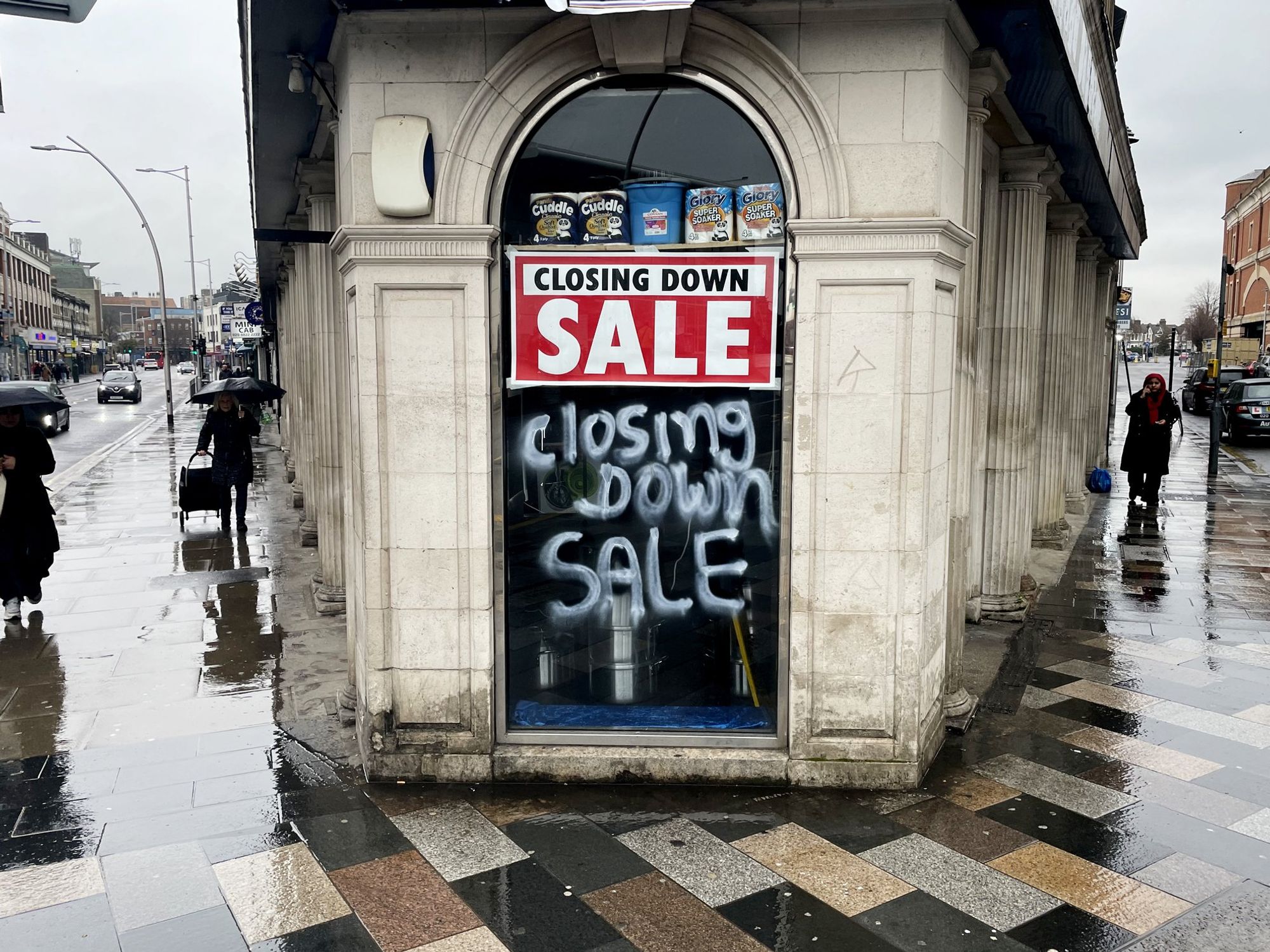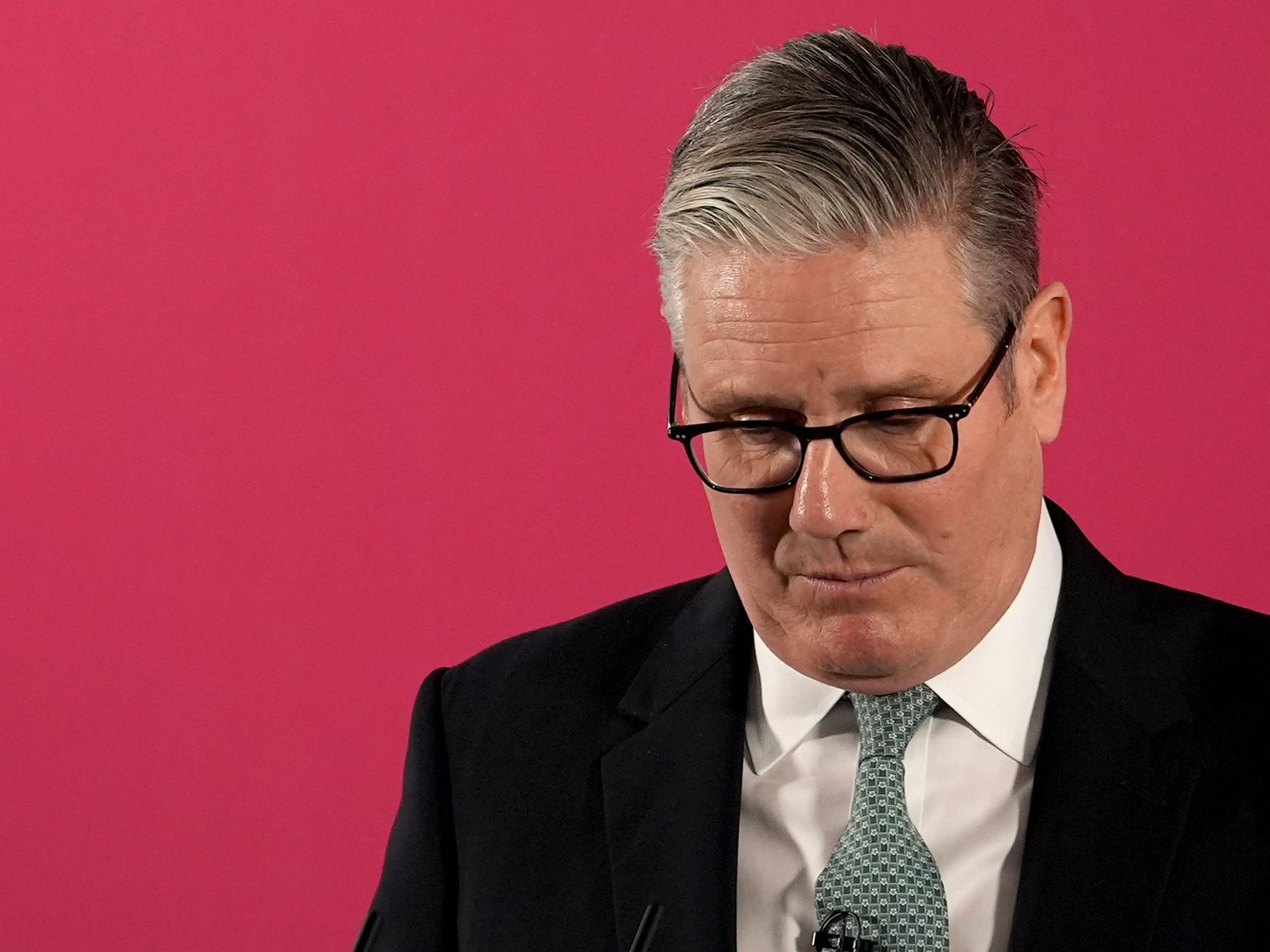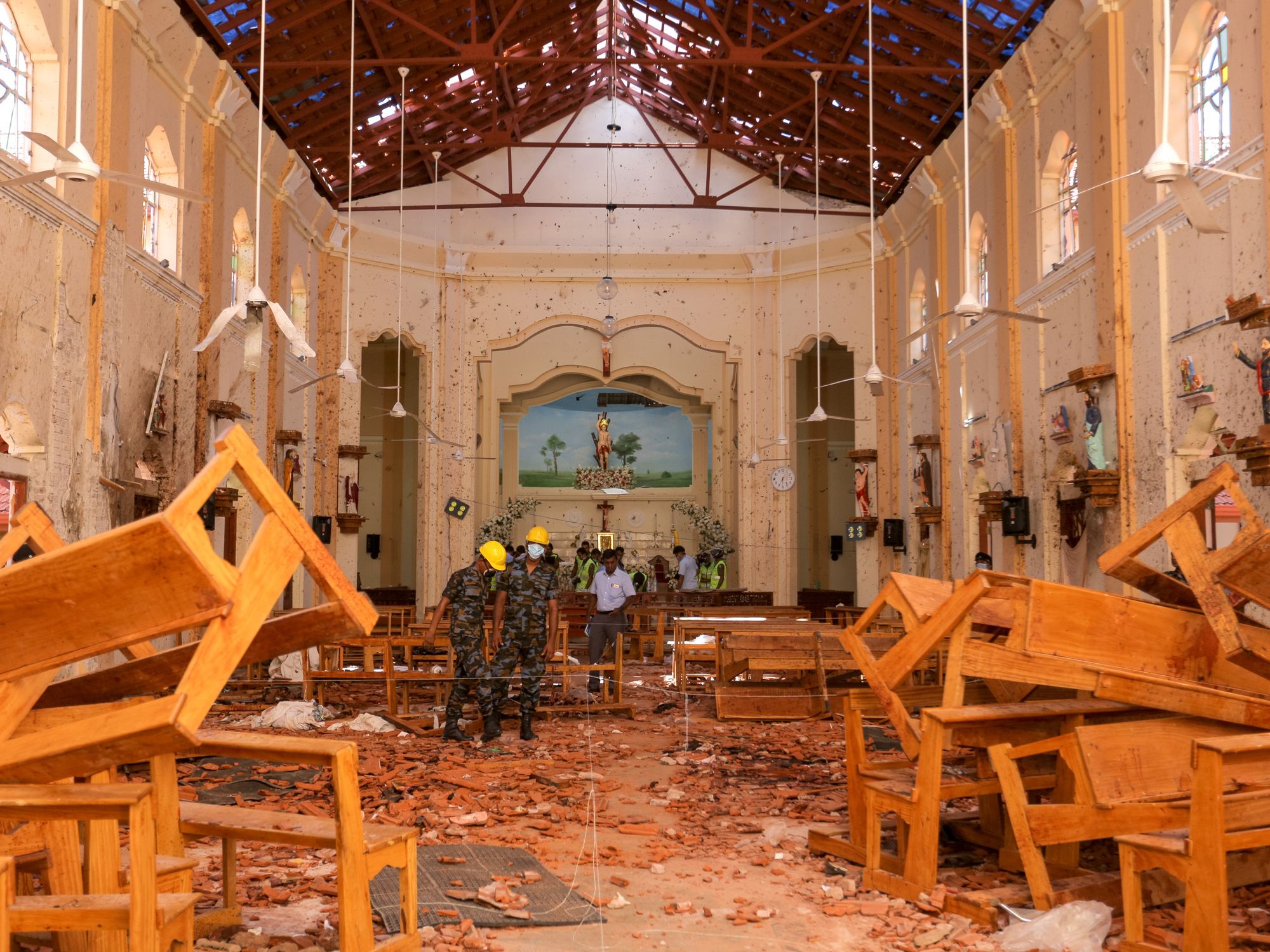The vandalism seen on Britain's streets shows the rot is deep... and the world is watching - Colin Brazier
These acts of cultural self-harm produce repugnance, writes former broadcaster and columnist Colin Brazier
Don't Miss
Most Read
Trending on GB News
The former footballer Joey Barton followed me on X last week. What this tells you about my output on social media, I cannot say, but I do know which of my posts drew his interest.
It was a picture of a war memorial in London, obscured by Palestine stickers. Above the photograph, I wrote: "This statue reminds us that 55,000 airmen in Bomber Command perished in WW2. Their odds of dying (not being injured or captured; but dying) were about 50/50. They cannot have conceived of a Britain that would, within a generation or two, be so contemptuous of their sacrifices."
I owe Joey Barton, and the million other X users who viewed my post, a minor apology. The monument in question was not actually - as I thought - the Bomber Command statue on Piccadilly. It was, in fact, the Battle of Britain memorial on the Embankment. Same war, different wings of the Royal Air Force.
The point, however, holds. And, judging by the response my post got, people are furious with protesters who see some of our most revered statuary as nothing more than a backdrop for students’ union-grade agitprop.
TRENDING
Stories
Videos
Your Say
The pro-Palestine mob have form on this. The huge bronze of Sir Winston Churchill in Parliament Square needs a police guard whenever their protests pass beneath him. And such acts of desecration - actual or intended - are not limited to London. The great Edwardian architect Edwin Lutyens made seven versions of the Cenotaph in Whitehall. One of them is in Rochdale, built to memorialise the deaths of thousands of young men drawn from the Lancashire mill-town and its neighbouring villages. Days after the October 7 attacks - far, far away in Israel - the cenotaph was vandalised and sprayed with ‘free Palestine’ slogans.
For the patriotic Britons who raised money to build this monolith, many of whom personally knew the teenagers and 20-somethings who formed close-knit (and often doomed) battalions of ‘pals’, the idea that it would one day be so little respected, would have been utterly bewildering. Almost as bewildering as finding that their once-proud town could become a byword for the vile activities of grooming gangs.
And yet, sad to say, we live in an age of forgetting. And, while I find it galling to see - for instance - the magnificent Royal Artillery memorial at Hyde Park Corner covered in Free Palestine stickers, there are more insidious examples of sacred spaces violated by activism.
Take the graffiti recently officially applied - in a fit of puerile juvenilia - to the interior of Canterbury Cathedral. Imagine going inside this cathedral, England’s oldest, in search of succour and solace after bereavement or loss (as a widower, I can attest to the comfort that can be drawn from sitting in a church and sensing a connection with old rhythms of life and death).
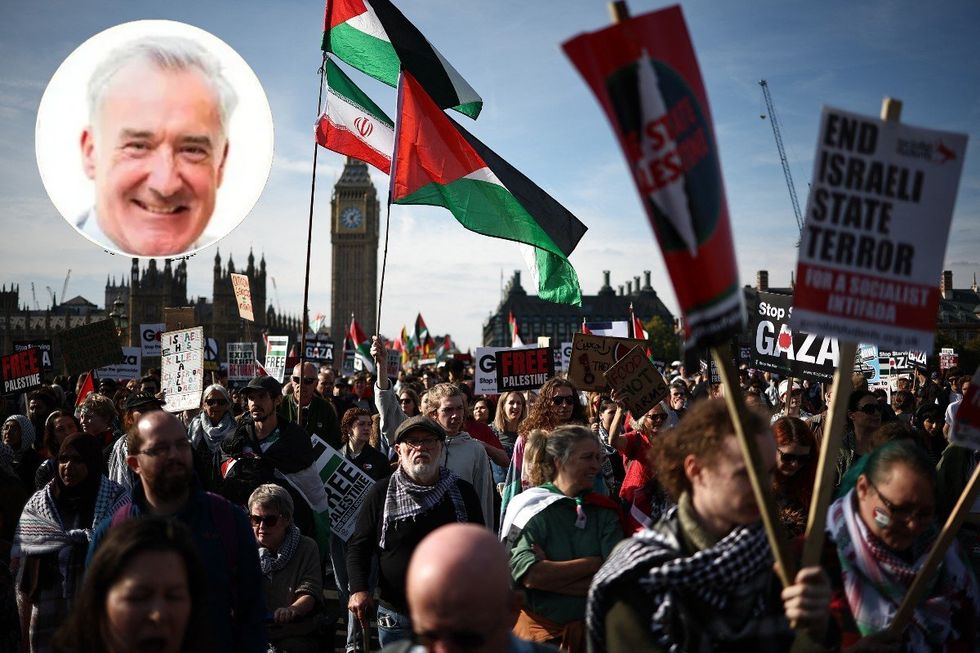
'The sight of a nation which can no longer protect its most estimable monuments is a sign of decay not lost on friends and enemies alike,' writes Colin Brazier
|GETTY/GB NEWS
What were the church authorities thinking?
Presumably, they hoped to stir debate. But all they succeeded in doing was generating publicity and scorn; which is not the same thing at all. As with the war memorials defaced by pro-Palestine supporters in London, this is a worldview set at Year Zero. Where all that matters is today and now. And where the values of those who have died long ago (in other words, before the beginning of this diverse century) count for little.
These acts of vandalism and cultural self-harm produce repugnance both here and further afield. The sight of a nation which can no longer protect its most estimable monuments is a sign of decay not lost on friends and enemies alike.
For Americans, in particular, Britain’s inability to protect that which is holy and foundational seems baffling. You could hear it in the words of US Vice-President JD Vance, when he expressed disbelief at the graffiti inside Canterbury Cathedral.
And this contrast, between American reverence and British indifference, has been brought home to me this week, as I visited friends in the United States. Of course, America, being a young country with a difficult birth, takes nation-building more seriously than we do. We have nothing to directly compare to the grandeur of the Washington Monument, Lincoln Memorial or Arlington Cemetery; all constructed on an epic scale to reflect the ambitions of a new nation which saw itself as a self-styled ‘city on a hill’.
And then there are the flags. I do not say that flags in the US, any more than in the UK, are uncontroversial. Sitting in a taxi in Washington, I noticed two neighbouring clapboard houses. One had the stars and stripes on a flagpole outside, while next door, the Pride flag was draped as a counterpoint from an upper storey.
But, for the most part, flags in America are an accepted fact of urban and, especially, rural life. Businesses, building sites, and public buildings routinely fly them. And not just big government departments (I photographed a crumbling sports centre in a run-down part of DC proudly flying the stars and stripes). Fire trucks thunder down streets, scattering traffic, but always carrying a prominent stars and stripes (often tethered from the truck’s own flagpole).
Nowhere did the difference in approach strike me more forcefully than at JFK airport. Walking around the terminal, there were flags hanging from the ceiling marking the feats of arms of various parts of the American military. It is simply unimaginable that such expressions of martial patriotism would find a place at Heathrow or Gatwick.
Some of it is the myth-creation of a country that needs an origin story to paper over the divisions of race and religion. The British reaction to this stuff is often sniffy. We consider it schmaltzy. But to the doubters I say: just because we are an old country does not mean we can duck nation-building.
Take a look at Ground Zero in New York and ask if Britain could pull off anything like it. Again, not just the feats of self-confident civil engineering that cleared away the rubble and restored a skyscraper to the skyline. But the 9/11 museum. It does not shy away from hard truths. One whole section is devoted to the growth of Islamic fundamentalism. You will find nothing of comparable candour in London, Manchester or any of the other British cities blighted by Islamist terror.
I am not saying, for a second, that America is unified. Its national story is contested. By the descendants of slaves, some of whom refuse to ‘take the knee’, and native Americans who claim - rightly - that American history did not begin with the Mayflower.
But there is still a reverence for the emblems of nationhood - a reverence which we are increasingly inclined to forfeit and abandon.
One final thought. In Princeton, where we visited a young friend who is studying there, I met a recent graduate who is hoping to become a Navy (special forces) SEAL. I recall two things about him, particularly. One was the story he told about his father, who commanded a nuclear submarine and how the crew would watch a piece of string tied end-to-end inside the hull slacken, as the sub dived deep and the pressure outside grew. The other was that this clever, thoughtful conservative always carried with him a pocket copy of the American Constitution, the better to settle arguments.
Because the reverence Americans feel for their symbols goes beyond buildings. We would do well to take note.
Our Standards: The GB News Editorial Charter
More From GB News


